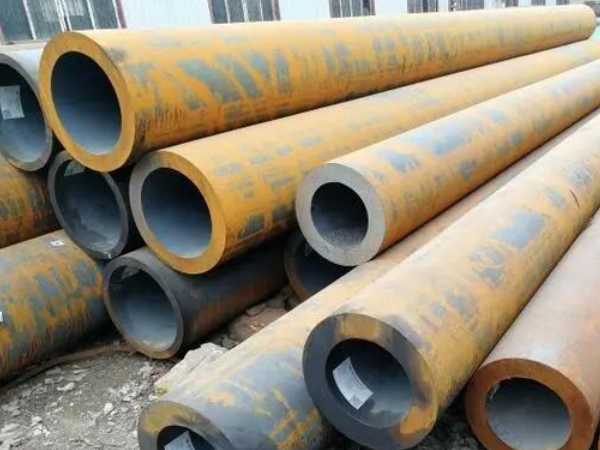Introduction to carbon steel pipe material characteristics, application areas and manufacturing processes:
1) Material characteristics of carbon steel pipes
1. Composition: Carbon steel pipe is a steel material with carbon as the main alloy element. Its carbon content is usually between 0.18% and 0.25%, and it also contains small amounts of elements such as silicon, manganese, phosphorus, sulfur and other impurities.
2. Physical properties: Carbon steel pipes have good physical properties, such as high hardness, high strength, and low magnetism.
3. Mechanical properties: Carbon steel pipes have excellent mechanical properties, including strength, toughness, ductility and plasticity. This allows carbon steel pipes to play an important role in many fields.

2) Application fields of carbon steel pipes
1. Construction field: Carbon steel pipes are widely used in the construction field, such as for building structures, bridge supports and piping systems.
2. Automobile field: Carbon steel pipes are an important part of automobile manufacturing and are used to manufacture automobile chassis, body structures and exhaust systems.
3. Mechanical field: Carbon steel pipes are widely used in the field of machinery manufacturing, such as manufacturing bearings, gears and mechanical parts.
4. Other fields: In addition, carbon steel pipes are also used in aerospace, petrochemical, energy and other industries to meet various engineering needs.
3) Manufacturing process of carbon steel pipe
1.
Hot rolling: Hot rolling is a common process in the manufacturing process of carbon steel pipes. Through pressing and stretching at high temperatures, steel can have higher hardness and strength.
2.
Cold rolling: The cold rolling process mainly manufactures carbon steel pipes through cold pressing and cold drawing to improve the surface quality and dimensional accuracy of the steel.
3. Welding: The manufacture of carbon steel pipes also requires a welding process to weld the steel into long tubes or pipe systems. Common welding methods include resistance welding, gas welding and arc welding.
Summarize:
To sum up, carbon steel pipes, as an important steel material, are widely used in construction, automobiles, machinery and other fields. Its material properties include composition, physical properties and mechanical properties, which can meet engineering needs. At the same time, the hot rolling, cold rolling and welding processes in the manufacturing process also ensure the quality of carbon steel pipes. Future research directions can focus on optimizing the manufacturing process and improving the performance of carbon steel pipes.
Go here to learn more about "Matters needing attention when purchasing carbon steel tubes"


